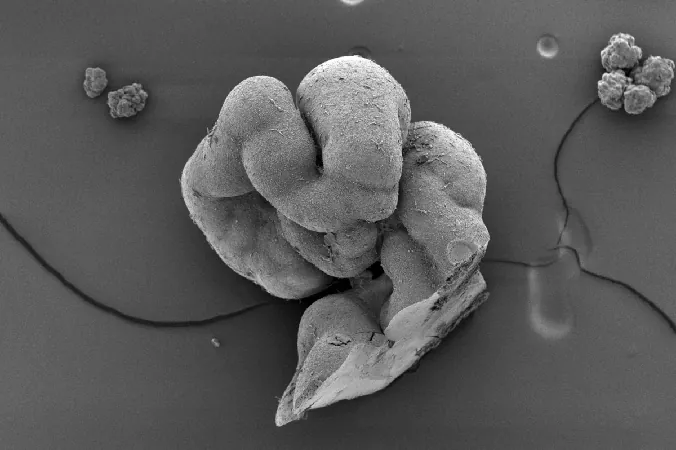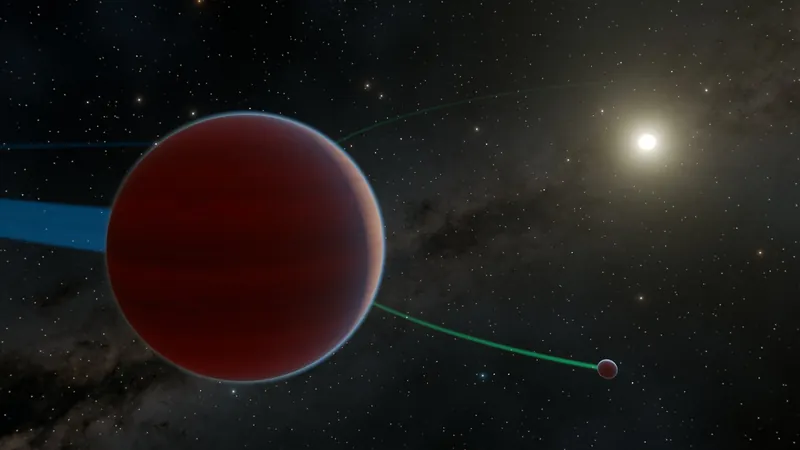
Revolutionary 'Navigation System' for Human Development Created in Lab: What This Means for Science!
2024-12-31
Author: Wei Ling
Groundbreaking Achievement in Notochord Replication
In a groundbreaking achievement, scientists have successfully replicated the notochord in a laboratory setting—an essential structure in vertebrates that serves as a biological GPS, steering the development of the spine and nervous system. This monumental leap forward by researchers at The Francis Crick Institute in London unveils new avenues for understanding early human development and could significantly expedite research into spinal disorders and back pain.
The Role of the Notochord
The notochord typically emerges in every human embryo, playing a pivotal role during the early stages of development. Although substantial progress has been made in cultivating various human tissues in laboratories over the last decade, replicating the notochord had remained an elusive challenge—until now.
Insights from the Study
“It’s been challenging to generate this crucial tissue in the lab, which has hindered our ability to study human development and associated disorders,” explained James Briscoe, senior author of the study and Group Leader of the Developmental Dynamics Laboratory. “With this newfound ability to create a viable model, we can now explore developmental conditions that previously kept us in the dark.
Mapping Molecular Signals
To crack the code of notochord formation, the research team meticulously mapped the molecular signals crucial for its creation during normal development, utilizing chicken embryos as a reference point. They compared their findings with genetic data from mouse and monkey embryos, providing a comprehensive analysis published in the respected journal *Nature*. This investigation clarified the significance of timing—specific signals must be delivered in a precise sequence for cells to develop correctly.
A Recipe for Success
Finding the right chemical signals to cultivate notochord tissue was akin to perfecting a recipe, according to Tiago Rito, the study's first author. "Past attempts failed because we lacked an understanding of the timing for integrating the necessary elements."
Developing Notochord Tissues
Armed with this critical information, scientists devised a framework for nurturing notochord tissue in the lab. It became apparent that briefly inhibiting two types of molecular signals—BMP and NODAL—at designated intervals was essential. When the team blocked these signals 24 hours after initiating tissue development, many cells took on characteristics indicative of notochord cells. However, interfering with these signals too early or too late resulted in the formation of different tissue types.
The Creation of 'Notoroids'
The resulting lab-grown tissues, creatively dubbed “notoroids,” displayed elongated structures remarkably reminiscent of those in developing embryos. These notoroids extended 1-2 millimeters in length and featured a prominent stripe of notochord cells at their center, surrounded by neural and muscle precursor cells. Approximately 70-75% of the trials successfully yielded these structures, which exhibited appropriate gene expression and characteristic cellular features.
Functional Significance of Notoroids
"What’s particularly thrilling is that the notochord in our lab-grown constructs appears to function similarly to its role within a developing embryo," Rito noted. "It emits chemical signals that assist in organizing surrounding tissues, mirroring typical developmental processes."
Implications for Spinal Disorders
In addition to enhancing our understanding of human development, this milestone opens new doors for research regarding conditions impacting the spine and nervous system. Given the notochord's vital role in forming these tissues, abnormal development has been linked to a range of disorders. The study might also provide insights into complications affecting intervertebral discs—those critical shock-absorbing cushions between vertebrae, which evolve from notochord tissue. As these discs tend to deteriorate with age, leading to persistent back pain, a clearer understanding of their development could unveil innovative therapeutic strategies.
Future Prospects in Regenerative Medicine
Looking to the future, the capability to grow notochord tissue in laboratories could spark exciting possibilities in regenerative medicine and drug discovery. Although direct applications for treating patients are still on the horizon, these notochord tissues might serve as invaluable platforms for testing new therapeutic avenues.
Conclusion
The realm of developmental biology just became significantly more thrilling—stay tuned as we follow these extraordinary developments!



 Brasil (PT)
Brasil (PT)
 Canada (EN)
Canada (EN)
 Chile (ES)
Chile (ES)
 Česko (CS)
Česko (CS)
 대한민국 (KO)
대한민국 (KO)
 España (ES)
España (ES)
 France (FR)
France (FR)
 Hong Kong (EN)
Hong Kong (EN)
 Italia (IT)
Italia (IT)
 日本 (JA)
日本 (JA)
 Magyarország (HU)
Magyarország (HU)
 Norge (NO)
Norge (NO)
 Polska (PL)
Polska (PL)
 Schweiz (DE)
Schweiz (DE)
 Singapore (EN)
Singapore (EN)
 Sverige (SV)
Sverige (SV)
 Suomi (FI)
Suomi (FI)
 Türkiye (TR)
Türkiye (TR)
 الإمارات العربية المتحدة (AR)
الإمارات العربية المتحدة (AR)